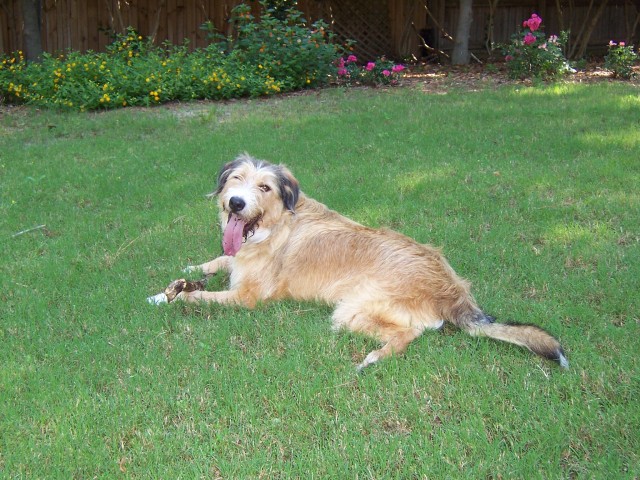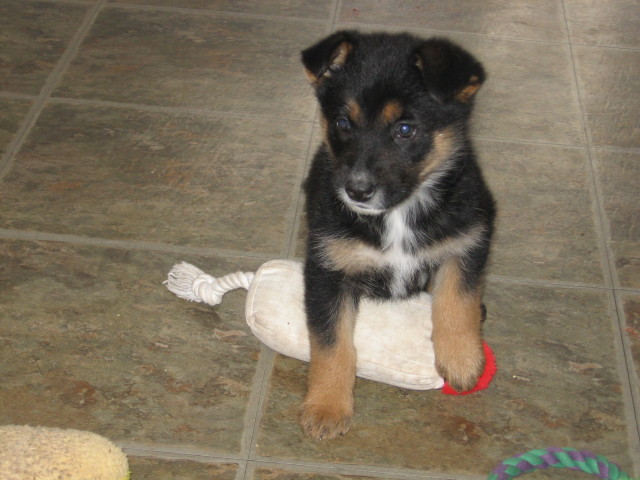QuestionHello,
I have a one year old dog, whom we rescued from the streets just eight months back. He is extremely loving and docile inside the home. However once he is outside, he is a different dog altogether. He pulls on the leash and literally pulls our arms out. He was not socialized as a puppy as he was sick with scabies and had limited contact with humans for over two months after his arrival. Hence, he is always afraid of strange sounds and movements and barks furiously. He hates to walk on crowded streets (In India, where i stay, there is no dearth of Crowded streets), cowers when he hears the horns and roars of traffic. He instead loves taking a two hour walk a day on a nearby hill. he enjoys himself on the hill but if we let him loose, he runs all over the hill and does not come when called. He is so fearful that it is next to impossible to take him to the vet. The Vet even recommended that we give him his vaccinations all by ourselves as he does not allow the vet to come within ten feet of his sight.
We have started giving him flower therapy to reduce his stress. he is slightly better, yet, his constant fear is creating many problems for him and also for us. Please help us bring down his fear level.
By the way... He was abused by five children and their parents before he was abandoned. could this be the reason for the problem.
AnswerCongratulations for being HUMAN OF THE WEEK in my book for rescuing this dog and giving him a wonderful life.
Your dog's extreme fear on the street is most likely a very strong conditioned response caused when he was a stray and suffered (possibly) abuse. Obviously, he very much enjoys the hill but letting him LOOSE is a HUGE ERROR. Instead, buy an extending leash (a strong one, with a belt, not a nylon string.) You can most likely find one of these online; they are trainer's extended leads (meaning, they work with a mechanism that allows you to let the dog out for many feet more than a normal leash and "reel" him in by pushing the handle's mechanism.) Allowing him off leash endangers him hugely; if he becomes frightened and runs for some reason, you won't be able to get him back and his new life crashes into another nightmare. Training a dog for recall (come when called) is not difficult...BUT...many dogs...and yours is one of them...are NOT candidates for off leash work.
Regarding the street, if possible make a bee line for that hill; use a Halti (head collar) on the street along with his normal collar and leash in order to more easily control his direction when he begins to over react to things on the street. The Halti (with lightweight leash) is to change the dog's direction, with a 'come along' signal (a word or phrase you invent for this purpose) and a small,special treat popped into the dog's mouth when he changes direction. At first, your dog most likely will not accept the treat. Extreme stress is the cause. As he becomes more secure with your direction, he may begin to accept the treat. In that case, you can dispense with the Halti (but I think it will take a great deal of time before this happens.) When you see him over reacting, change direction slowly and use the Halti to steer him. As you do so, use your come along word or phrase in a very calm voice. Try to make eye contact with the dog. If he makes eye contact while (or soon after) changing direction, offer the treat. This is a desensitizing exercise and due to the fact that your dog has such a strong (and acquired as a young dog) conditioned fear response, it will take time (as stated above.) The Halti will (because it's a head restraint) also control his barking and make it easier for you to rehabilitate this situation also.
Regarding the veterinarian, giving your own vaccinations is quite simple and your veterinarian can instruct you. It's a simple subcutaneous (under the skin, usually at the withers) puncture and, if coupled with a chunk of hot dog or cheese, the dog will not even know you've done it. I don't know whether or not rabies vaccination is part of the protocol in India, but that is an intramuscular injection and requires the veterinarian. If you must take the dog to the vet (and every dog should have vaccinations once every three years and an annual wellness checkup), a sedative one hour before the visit should help. Veterinarians should (not all can) be able to handle dogs that are fearful, this is not an unusual problem. Perhaps you can find one that is more experienced with this problem.

 anxious dog
Question
Louie
Hi, We adopted a 2 year old male A
anxious dog
Question
Louie
Hi, We adopted a 2 year old male A
 Dog walking problems
Question
Snickers
I have been trying to train my dog SN
Dog walking problems
Question
Snickers
I have been trying to train my dog SN
 Sudden aggression within pack after a death
Question
Sudden aggression in o
We have an approximatel
Sudden aggression within pack after a death
Question
Sudden aggression in o
We have an approximatel
 puppy problems
QuestionQUESTION: I am the proud owner of 2 german shep
puppy problems
QuestionQUESTION: I am the proud owner of 2 german shep
 Post bladder surgery potty training for INDOORS!
QuestionTiki
QUESTION: Dear Dr. Connor,
My 10 ye
Post bladder surgery potty training for INDOORS!
QuestionTiki
QUESTION: Dear Dr. Connor,
My 10 ye